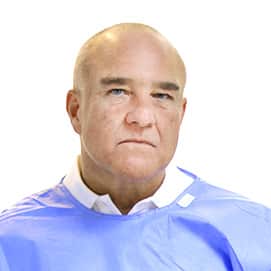Along with surgery and drug therapy, radiotherapy, or radiotherapy, is the most commonly used form of treatment for breast cancer. With the help of high-dose ionizing radiation (for example, X-rays), the structure of the irradiated cells is damaged - in healthy cells exactly to the same extent as in the remaining cancer cells. However, cancer cells do not have such a good regenerating system as normal cells. Therefore, it is impossible for them to restore the damage received during irradiation - the cells die. In most cases, radiation therapy is performed after surgery, i.e. adjuvantly, in order to destroy non-removed tumor cells and thus avoid recurrence.
After organ-preserving surgery irradiation of the entire remaining breast is now the standard, because with this, the likelihood of the cancer coming back (recurrence) can be markedly reduced. After mastectomy most often, radiation therapy is not required. Irradiation here is carried out only for very large tumors, when the tumor, despite the operation, cannot be completely removed, or when more than three lymph nodes are affected. If only 1-3 axillary lymph nodes are affected, in some cases, radiation therapy can be abandoned.
Primary or only radial therapy can be prescribed only when it is impossible to perform an operation (for example, with an inoperable tumor or due to severe concomitant diseases) or when the patient refuses surgery. If metastases are found in the lymph nodes and/or it is not possible to remove all remnants of the tumor, the lymph drainage pathways are irradiated at the same time - depending on the results of the examination in the axillary region, in the collarbone region or very rarely in the sternum region. In advanced stages, radiation therapy is also used to treat metastases.
Irradiation after surgery should be started as soon as possible - as soon as the wound heals, i.e. at the earliest after 3 weeks, at the latest after 8 weeks. With additional chemotherapy, radiation is started due to the risk of delay due to increased side effects, or radiation therapy is carried out between individual cycles of chemotherapy. And hormonal therapy and antibody therapy can be carried out simultaneously with radiation therapy. How long and at what dose the irradiation will be carried out depends on the individual situation of the patient. As a rule, treatment lasts about 6 weeks. During this time, the patient comes several times a week for irradiation at a radiotherapy clinic or outpatient clinic. If additional radiation is needed (“Boost”, “additional dose”), the treatment is extended by 2 weeks.
Treatment duration and dosing are currently being debated; It is possible that in the future a shorter course of radiation therapy with a higher single dose (so-called hypofractionation) but with a lower total radiation dose will be used as the standard. Each exposure does not last long, and each time only a small part of the total dose is given. Thus, healthy tissues (especially the skin) are given time to recover every time.
Most often, irradiation is carried out through the skin (“percutaneously”). Modern technology today allows for very precise targeted irradiation, so that in the desired area - the region of the tumor - the maximum concentration of irradiation is achieved without damaging the surrounding healthy tissues. This is achieved with the help of equipment that sends rays from different directions, but the destructive effect on cells occurs only where these rays intersect. The entire mammary gland is always irradiated. For younger patients and those with an increased risk of recurrence, supplementary Boost irradiation, which is treated in the area of the former tumor with an increased dose (“Boost”), is especially useful.
An alternative to external Boost radiation can also be brachytherapy (brachy = from the Greek for "short, close"). In this technique, also called internal radiation therapy, under short anesthesia, a radioactive substance is injected through a small plastic catheter directly into the area of the former tumor.
With few exceptions, namely, in clinical trials, intraoperative irradiation is performed only as a supplement to external postoperative irradiation and reduces its time, but does not replace it. In this intraoperative radiation therapy, which can be given immediately after tumor removal before wound closure, the radiation source is injected directly into the remaining tumor bed. Then a very high dose (Boost) is irradiated. After the wound has healed, irradiation of the entire mammary gland is connected.
Head of the Clinic of Oncology, Hematology and Palliative Medicine
Head of the Clinic for General, Visceral, Thoracic and Endocrine Surgery
Head of the Clinic for Radiation Therapy and Radiological Oncology
Video
Request appointment
Useful links
Photo gallery












